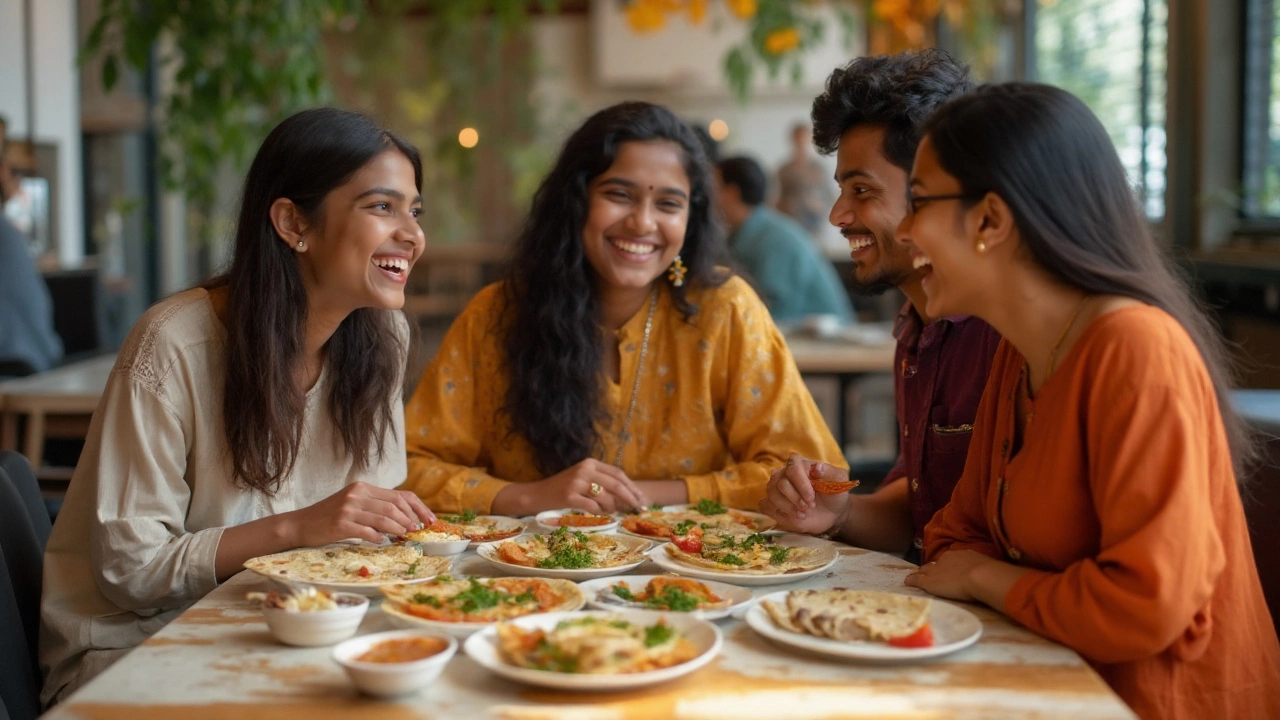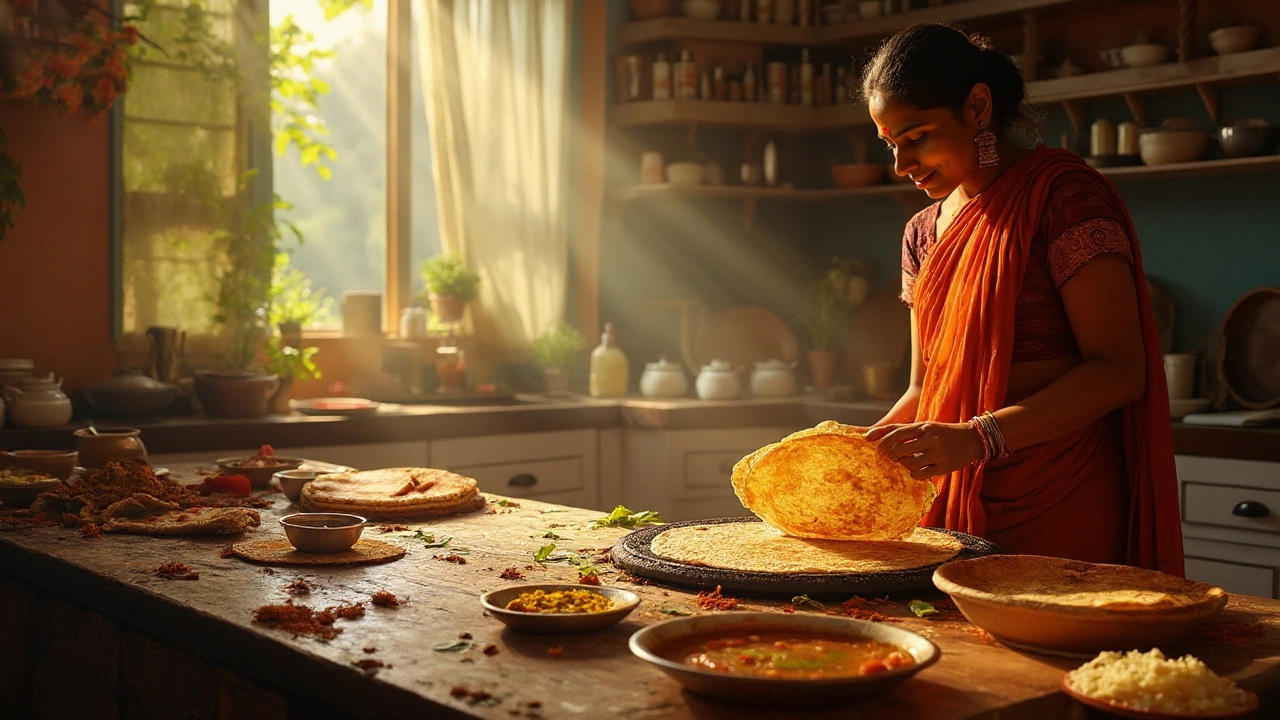Craving dosa every morning? You’re not alone. Those crisp, golden crepes somehow have a way of calling out — whether you grew up dunking them in sambar or just discovered their magic at a local eatery. But should you give in to that urge daily? There’s a whole world behind this simple-looking treat: ingredients, nutrition, health talk, and clever tips for making your dosa habit a little healthier (and a lot more exciting). Forget what you thought you knew — this staple can surprise you.
What’s Really in Your Dosa? Ingredients, Nutrition, and Hidden Truths
The classic dosa is mostly made of rice and urad dal (split black gram). Soaked, ground, and then fermented overnight — that’s basically a mini science lab on your kitchen counter. Some folks toss in a little fenugreek seed, which helps fermentation and gives more depth to the batter. But what does all that mean for your body?
One standard plain dosa (around 100g) packs about 150-170 calories. Most of that comes from carbohydrates, with a little protein (3-4g) and a small amount of fat (if you brush on ghee or oil). Here’s the breakdown for those who want to go geeky for a sec:
| Component | Per Plain Dosa (100g) |
|---|---|
| Calories | 165 kcal |
| Carbohydrates | 30 g |
| Protein | 3.5 g |
| Fat | 2.5 g |
| Fiber | 1 g |
| Sodium | 63 mg |
| Calcium | 10 mg |
| Iron | 0.3 mg |
Now, dosa is naturally gluten-free. If you have celiac disease or gluten sensitivity, this is a big plus. But there’s more: because dosa batter is fermented, it’s much better for digestion and your gut than just plain rice. Fermentation bumps up the good bacteria, and you’ll absorb more vitamins like B and C. If you’re vegan or vegetarian, dosa fits right in. But the exact nutrition depends a lot on the filling, toppings, oil, and sides. Stuff your dosa with potato masala? Add calories and carbs. Stick to plain with a light coconut chutney? That’s on the lighter side.
What Happens If You Eat Dosa Every Day?
If you just love dosa and want to eat it every morning, what’s the catch? Here’s the honest answer: you’re fine as long as you mix it up, watch the add-ons, and keep your portions reasonable. Dosa itself isn’t “unhealthy.” But rice is the main ingredient, and white rice is high on the glycemic index — meaning it spikes your blood sugar faster than, say, whole wheat roti or oats. For diabetics or those watching weight, this matters. The protein content is on the lower side compared to eggs or paneer, so if you’re aiming for more muscle or just keeping hunger at bay, dosa on its own might not cut it.
But let’s get real. Most people don’t eat dosa dry and alone. Sides can change everything: sambar adds fiber and protein, while coconut chutney (in excess) can bring in a lot of saturated fat. Masala dosa, with that buttery potato filling, doubles the calorie count. Eat that every day, and you might see the results — on your waistline and your cholesterol tests.
Now, don’t panic! There are folks in South India who have dosa as a staple for breakfast or dinner and lead active, healthy lives. But their meals usually include lots of fresh vegetables, legumes, and not an overload of oil or chutney. If your habits look like this, you’re in the safe zone. The caveat: if you’re sedentary and your meal looks more like “Restaurant Masala Dosa with three coconut chutneys and sugary coffee,” rethink eating dosa daily — or at least this style of dosa.

Dosa as a Healthy Habit: How to Make Daily Dosa Work for You
You can totally eat dosa every day if you play your cards right. Here are some simple strategies that genuinely work:
- Go beyond white rice: Try brown rice, red rice, or millet in your batter. Millets like ragi or bajra add fiber and protein, slow down that blood sugar spike, and actually taste great after fermentation.
- Add extra dal:
- Increase the urad dal or throw in split yellow moong dal. This boosts protein. Even tossing a handful of soaked chana dal into the batter makes a difference.
- Stuff them smart:
- Instead of classic potato, load up with sautéed spinach, mushrooms, shredded carrot, peas, or mixed sprouts. You’ll get more micronutrients and less starch.
- Watch the oil:
- Use a nonstick pan, go light on oil or ghee. If you fry them like a street vendor, cholesterol will climb.
- Pair for balance:
- Add a bowl of sambar loaded with lentils and veggies. Sides like tomato chutney or mint chutney have less saturated fat than coconut versions.
- Mind the portion:
- Stick to one or two dosas, not four, especially if you’re not super active.
- Mix up your meals:
- If you can’t resist, maybe swap out dinner with dosa occasionally, but keep lunch or other meals more protein-focused — like dal, eggs, paneer, or salads.
Take an honest look at what’s on your plate, not just the dosa itself. Small swaps go a long way. Many nutritionists recommend not repeating the same grain morning and night, so blend in variety where you can. If dosa is your “comfort food,” at least make your comfort the healthiest version it can be!
Popular Variations and Regional Twists to Try
Stuck on plain dosa? You’re missing out. India is basically the land of endless dosa options — from thick set dosa in Karnataka to paper-thin varieties in Tamil Nadu. Lately, city home cooks and Instagram chefs are going wild with fusion ideas, so there’s really no excuse for dosa boredom.
- Pesarattu: Made of moong dal, it’s high in protein and fiber. Popular in Andhra Pradesh, this vibrant green dosa keeps you full longer.
- Ragi dosa: Ragi (finger millet) is rich in calcium and iron. It has a nutty flavor and is great for anyone with low energy or iron deficiency.
- Oats dosa: If you’re after a lighter, quick breakfast, oats dosa is ready in 10 minutes — just mix oats flour, yogurt (or plant curd), spices, and water. No fermentation fuss.
- Neer dosa: From coastal Karnataka, this barely-fermented thin crepe uses mostly rice but is super soft and usually paired with light coconut chutney or veg stews.
- Adai: Packs in toor dal, chana dal, urad dal, rice, and sometimes curry leaves, chilies, and veggies. Tons of protein, gorgeous color, and very filling.
- Cheese dosa, Paneer dosa, or fusion dosa: If you’re cooking for kids (or want a break from tradition), add cheese, paneer bhurji, or even kimchi — anything goes.
You don’t have to choose just one version. It’s fun to explore regional recipes, and each brings unique nutrition. Explore dosa as your blank canvas: try beetroot dosa for color, or spinach puree dosas for an iron boost. If you’re still feeling stuck, challenge yourself to a new dosa version every week — you’ll barely notice it’s “the same” food.

Science, Fun Facts, and More: Dosa vs Other Breakfasts
Let’s weigh dosa against what most people might eat for breakfast: poha, paratha, idli, upma, bread toast, or eggs. Nutritionally, dosa is a starchy, fermented food with low fat (if you’re careful with the oil), but higher in carbohydrates than eggs or besan chilla. It wins extra points for being naturally gluten-free and easier to digest — thanks to fermentation.
Let’s talk data! According to a 2022 survey by the National Institute of Nutrition India, about 68% of South Indians eat dosa at least once a day, and only 7% of those report issues like acidity or digestion trouble, mainly due to excess oil or lack of variety. The same study showed those who added millets or more dal to their dosa batter had better satiety and lower blood sugar spikes than those who just stuck to white rice batter.
| Breakfast | Calories (per serving) | Main macronutrient | Satiety (Fullness rating 1-5) |
|---|---|---|---|
| Dosa (plain) | 165 | Carbohydrates | 2 |
| Oats Upma | 150 | Fiber | 3 |
| Egg Bhurji Toast | 200 | Protein | 4 |
| Idli (2 pcs) | 140 | Carbohydrates | 2 |
| Besan Chilla | 120 | Protein | 3 |
| Paratha (plain) | 245 | Carbohydrates/Fat | 4 |
Final fun facts: Dosa has been around for at least 1,500 years, mentions pop up in ancient Tamil literature, and today there are foodies who’ve tried 100+ unique dosas in one year. If you stick to homemade, fermented batters, dose up the nutrients, and stay creative, you’re not doing your body any harm with a daily dosa habit. Just give your tastebuds and gut something new now and then — your body (and your mood) will thank you.
